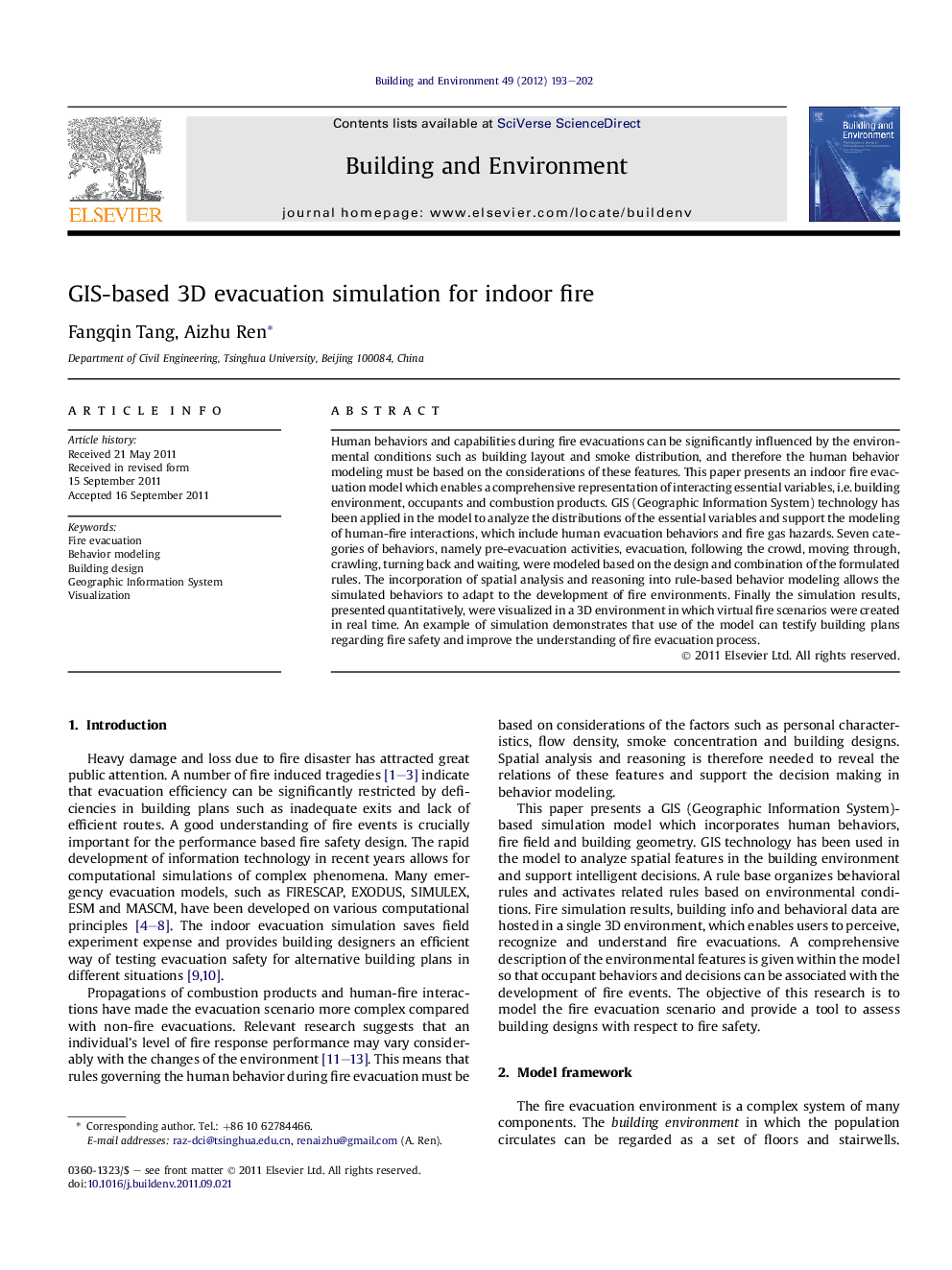| Article ID | Journal | Published Year | Pages | File Type |
|---|---|---|---|---|
| 248645 | Building and Environment | 2012 | 10 Pages |
Human behaviors and capabilities during fire evacuations can be significantly influenced by the environmental conditions such as building layout and smoke distribution, and therefore the human behavior modeling must be based on the considerations of these features. This paper presents an indoor fire evacuation model which enables a comprehensive representation of interacting essential variables, i.e. building environment, occupants and combustion products. GIS (Geographic Information System) technology has been applied in the model to analyze the distributions of the essential variables and support the modeling of human-fire interactions, which include human evacuation behaviors and fire gas hazards. Seven categories of behaviors, namely pre-evacuation activities, evacuation, following the crowd, moving through, crawling, turning back and waiting, were modeled based on the design and combination of the formulated rules. The incorporation of spatial analysis and reasoning into rule-based behavior modeling allows the simulated behaviors to adapt to the development of fire environments. Finally the simulation results, presented quantitatively, were visualized in a 3D environment in which virtual fire scenarios were created in real time. An example of simulation demonstrates that use of the model can testify building plans regarding fire safety and improve the understanding of fire evacuation process.
► An evacuation model for indoor fire with numerical simulation and 3D visualization. ► GIS is capable of the spatial analysis of indoor environments. ► GIS analysis allows behavior modeling to take account of environmental conditions. ► Detouring behaviors in smoke significantly increase floor clearing times. ► The model can testify building plans regarding fire safety.
